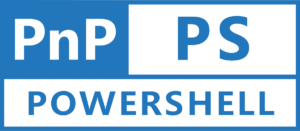In today’s blog post, we’ll explore how to efficiently manage alerts in SharePoint using PowerShell cmdlets provided by the Patterns and Practices (PnP) PowerShell module. SharePoint alerts are a powerful way to stay informed about changes to content within your SharePoint sites. With PnP PowerShell, we can automate the creation, retrieval, and removal of alerts, saving time and effort for SharePoint administrators.
Prerequisites
Before getting started with managing SharePoint alerts using PnP PowerShell, ensure you have the following prerequisites in place:
- PnP PowerShell Module: Install the PnP PowerShell module on your local machine. If you need guidance on installing the module, refer to my earlier blog post: PnP PowerShell: How to get started? – Hemant Kabra
Creating Alerts with Add-PnPAlert
The Add-PnPAlert cmdlet allows us to create alerts for SharePoint lists with ease. We can specify various parameters such as list name, alert title, frequency, delivery method, and more. Let’s take a look at a sample script demonstrating the usage of Add-PnPAlert:
# Example: Create an alert in the specified list with custom parameters
Add-PnPAlert -List "PnP Demo List" -Title "My PnP Alert" -Frequency Immediate -DeliveryMethod Email
In this example, we’re creating an immediate alert named “My PnP Alert” for the “PnP Demo List”, with email delivery.
Retrieving Alerts with Get-PnPAlert
The Get-PnPAlert cmdlet allows us to retrieve alerts from SharePoint lists. We can filter alerts based on various criteria such as list name, alert title, or user. Let’s see how we can use Get-PnPAlert:
# Example: Retrieve alerts from the specified list
$alerts = Get-PnPAlert -List "PnP Demo List"
This command retrieves all alerts associated with the “PnP Demo List”.
Removing Alerts with Remove-PnPAlert
The Remove-PnPAlert cmdlet enables us to remove alerts from SharePoint lists. We can specify the alert to remove based on its identity or user. Let’s demonstrate how to remove alerts:
# Example: Remove alert for the specified user and alert identity
Remove-PnPAlert -User "i:0#.f|membership|user@example.com" -Identity "alert-guid-here"
In this example, we’re removing a specific alert for the user “user@example.com” using the alert’s GUID.
Conclusion
Managing SharePoint alerts becomes streamlined and efficient with the capabilities offered by PnP PowerShell cmdlets. By leveraging Add-PnPAlert, Get-PnPAlert, and Remove-PnPAlert, administrators can automate alert management tasks, ensuring users stay informed about important changes in SharePoint content.
For more details and examples, you can access the full scripts in my GitHub repository: Manage SharePoint Alerts using PnP PowerShell
Stay tuned for more tips and tricks on SharePoint administration and automation!

